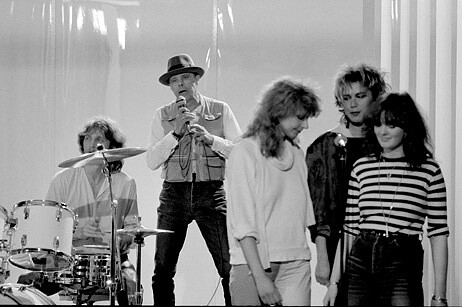In these times, we know that everything can be an artwork. Or rather, everything can be turned into an artwork by an artist. There is no chance of a spectator distinguishing between an artwork and a “simple thing” on the basis of the spectator’s visual experience alone. The spectator must first know a particular object to be used by an artist in the context of his or her artistic practice in order to identify it as an artwork or as a part of an artwork.
But who is this artist, and how can he or she be distinguished from a non-artist—if such a distinction is even possible? To me, this seems a far more interesting question than that of how we can differentiate between an artwork and a “simple thing.”
Meanwhile, we have a long tradition of institutional critique. During the last few decades, the role of collectors, curators, trustees, museum directors, gallerists, art critics, and so forth has been extensively analyzed and criticized by artists. But what about the artists themselves? The contemporary artist is clearly an institutional figure as well. And contemporary artists are mostly ready to accept the fact that their critique of art institutions is a critique from within. Today, the artist could be defined simply as a professional fulfilling a certain role in the general framework of the art world, a world that is based—as any other bureaucratic organization or capitalist corporation—on the division of labor. One can also argue that part of this role is to criticize the art world with a goal to make it more open, more inclusive, and better informed, and because of that also more efficient and more profitable. This answer is certainly plausible—but at the same time not really persuasive.
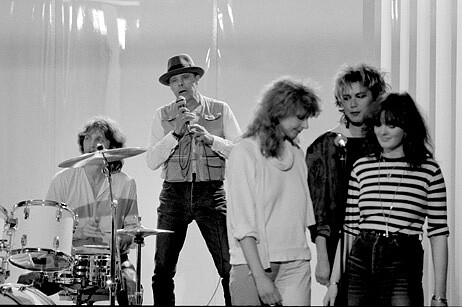

1. De-professionalizing Art
Let us remember Joseph Beuys’ well-known maxim: “Everybody is an artist.” This maxim has a long tradition, going back to early Marxism and the Russian avant-garde, and is therefore almost always characterized today—and was already characterized in Beuys’ time—as utopian. This maxim is usually understood as an expression of a utopian hope that, in the future, the mankind that currently consists predominantly of non-artists becomes a mankind consisting of artists. Not only can we now agree that such a hope is implausible, but I would never suggest that it is utopian if the figure of the artist is defined this way. A vision of the world completely turned into the art world, in which every human being has to produce artworks and compete for the chance to exhibit them at this or that biennial, is by no means a utopian vision, but quite dystopian—in fact, a complete nightmare.
All art education—as with education in general—has to be based on certain types of knowledge or a certain mastery that is supposed to be transmitted from one generation to another. Thus, the question arises: what kind of knowledge and mastery is transmitted by contemporary art schools? This question, as we all know, produces a lot of confusion now. The role of the pre-avant-garde art academies was well enough defined. There, one had to do with the well-established criteria of technical mastery—in painting, sculpture, and other media—that could be taught to the art students. Today, the art schools partially return to this understanding of art education—especially in the field of new media. Indeed, photography, film, video, digital art, and so forth require certain technical skills that art schools can teach. But of course art cannot be reduced to the sum of technical abilities. This is why we now see the reemergence of the discourse on art as a form of knowledge—a discourse that becomes unavoidable when art comes to be taught.


Now the claim that art is a form of knowledge is by no means new. Religious art had a claim to present the religious truths in a visual, pictorial form to a spectator who could not contemplate them directly. And traditional mimetic art pretended to reveal the natural, everyday world in a way in which the common spectator could not see it. Both of these claims were criticized by many thinkers, from Plato to Hegel. And both were endorsed by many others, from Aristotle to Heidegger. But whatever one can say about the corresponding philosophical benefits and drawbacks, both of these claims about art being a specific form of knowledge were explicitly rejected by the historical avant-garde—together with the traditional criteria of mastery connected to these claims. Through the avant-garde, the profession of the artist became de-professionalized.
The de-professionalization of art has put the artist in a pretty awkward situation, because this de-professionalization is often interpreted by the public as a return of the artist to a status of non-professionalism. Accordingly, the contemporary artist begins to be perceived as a professional non-professional—and the art world as a space of “art conspiracy” (to use Baudrillard’s term).1 The social effectiveness of this conspiracy would appear to present a mystery only decipherable sociologically (see the writings of Bourdieu and his school).
However, the de-professionalization of art undertaken by the avant-garde should not be misunderstood as a simple return to non-professionality. The de-professionalization of art is an artistic operation that transforms art practice in general, rather than merely cause an individual artist to revert back to an original state of non-professionality. Thus the de-professionalization of art is in itself a highly professional operation. I will later discuss the relationship between de-professionalization and the democratization of art, but I should begin with how knowledge and mastery are needed in order to de-professionalize art in the first place.
2. The Weak Signs of the Avant-garde
In his recent book The Time That Remains, Giorgio Agamben describes—using the example of Saint Paul—the knowledge and mastery required to become a professional apostle.2 This knowledge is messianic knowledge: knowledge of the coming end of the world as we know it, of contracting time, of the scarcity of time in which we live—the scarcity of time that annuls every profession precisely because the practicing of every profession needs a perspective of longue durée, the duration of time and the stability of the world as it is. In this sense, the profession of the apostle is, as Agamben writes, to practice “the constant revocation of every vocation.”3 One can also say, “the de-professionalization of all professions.” Contracting time impoverishes, empties all our cultural signs and activities—turning them into zero signs or, rather, as Agamben calls them, weak signs.4 Such weak signs are the signs of the coming end of time being weakened by this coming, already manifesting the lack of time that would be needed to produce and to contemplate strong, rich signs. However, at the end of time, these messianic weak signs triumph over the strong signs of our world—strong signs of authority, tradition, and power, but also strong signs of revolt, desire, heroism, or shock. Speaking about the weak signs of the messianic, Agamben obviously has in mind “weak messianism”—a term introduced by Walter Benjamin. But one can also remember (even if Agamben does not) that in Greek theology, the term “kenosis” characterized the figure of Christ—the life, suffering, and death of Christ as a humiliation of human dignity, and an emptying out of the signs of divine glory. In this sense, the figure of Christ also becomes a weak sign that can be easily (mis)understood as a sign of weakness—a point that was extensively discussed by Nietzsche in The Antichrist.
Now I would suggest that the avant-garde artist is a secularized apostle, a messenger of time who brings to the world the message that time is contracting, that there is a scarcity of time, even a lack of time. Modernity is, indeed, an era of the permanent loss of the familiar world and of traditional conditions of living. It is a time of permanent change, of historical breaks, of new ends and new beginnings. Living within modernity means to have no time, to experience a permanent scarcity, a lack of time due to the fact that modern projects are mostly abandoned without being realized—every new generation develops its own projects, its own techniques, and its own professions to realize those projects, which are then abandoned by the following generation. In this sense, our present time is not a postmodern but rather an ultramodern time, because it is the time in which the scarcity of time, the lack of time, becomes increasingly obvious. We know it because everybody is busy today—nobody has time.
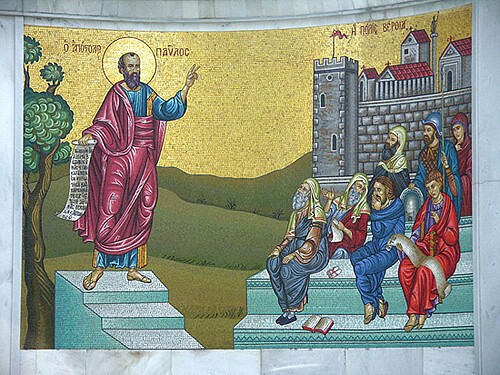

Throughout the modern era, we saw all our traditions and inherited lifestyles condemned to decline and disappearance. But neither do we today trust our present time—we do not believe that its fashions, lifestyles, or ways of thinking will have any kind of lasting effect. In fact, the moment new trends and fashions emerge, we immediately imagine that their inevitable disappearance will come sooner rather than later. (Indeed, when a new trend emerges, the first thought that comes to one’s mind is: but how long will it last? And the answer is always that it will not last very long.) One can say that not only modernity, but even—and to a much greater degree—our own time, is chronically messianic, or, rather, chronically apocalyptic. We almost automatically see everything that exists and everything that emerges from the perspective of its impending decline and disappearance.
The avant-garde is often associated with the notion of progress—especially technological progress. Indeed, one can find many statements by avant-garde artists and theorists directed against conservatives and insisting on the futility of practicing old forms of art under new conditions determined by new technology. But this new technology was interpreted—at least by the first generation of avant-garde artists—not as a chance to build a new, stable world, but as a machine promising destruction of the old world, as well as the permanent self-destruction of modern technological civilization itself. The avant-garde perceived the forces of progress as predominantly destructive ones.
Thus the avant-garde asked whether artists could continue to make art amid the permanent destruction of cultural tradition and the familiar world through the contraction of time, which is the main characteristic of technological progress. Or, put differently: How can artists resist the destructiveness of progress? How can one make art that would escape permanent change—art that would be atemporal, transhistorical? The avant-garde did not want to create the art of the future—it wanted to create transtemporal art, art for all time. One repeatedly hears and reads that we need change, that our goal—also in art—should be to change the status quo. But change is our status quo. Permanent change is our only reality. And in the prison of permanent change, to change the status quo would be to change the change—to escape the change. In fact, every utopia is nothing other than an escape from this change.
When Agamben describes the annulment of all our occupations and the emptying of all our cultural signs through the messianic event, he does not ask how we can transcend the border that divides our era from the coming one. He does not ask this question because the Apostle Paul does not ask it. St. Paul believed that an individual soul—being immaterial—would be able to cross this border without perishing, even after the end of the material world. However, the artistic avant-garde did not seek to save the soul, but art. And it tried to do so by means of reduction—by reducing cultural signs to the absolute minimum so that they could be smuggled across the breaks, shifts, and permanent changes in cultural fashions and trends.
This radical reduction of artistic tradition had to anticipate the full degree of its impending destruction at the hand of progress. By means of reduction, the artists of the avant-garde began to create images that seemed to them to be so poor, so weak, so empty, that they would survive every possible historical catastrophe.
In 1911, when Kandinsky speaks in “On the Spiritual in Art” about the reduction of all painterly mimesis, all representation of the world—the reduction that reveals that all paintings are actually combinations of colors and shapes—he wants to guarantee the survival of his vision of painting through all possible future cultural transformations, including even the most revolutionary ones. The world that a painting represents can disappear, but the painting’s own combination of colors and shapes will not. In this sense, Kandinsky believes that all images already created in the past or to be created in the future can also be seen as his own paintings—because regardless of what the images were, are, or could be, they necessarily remain combinations of certain colors and shapes. And that relates not only to painting, but also to all other media including photography and cinema. Kandinsky did not want to create his own individual style, but rather used his paintings as a school for the spectator’s gaze—a school that would allow the spectator to see the invariable components of all possible artistic variations, the repetitive patterns underlying the images of historical change. In this sense, Kandinsky does understand his own art as being timeless.
Later, with the Black Square, Malevich undertakes an even more radical reduction of the image to a pure relationship between image and frame, between contemplated object and field of contemplation, between one and zero. In fact, we cannot escape the black square—whatever image we see is simultaneously the black square. The same can be said about the readymade gesture introduced by Duchamp—whatever we want to exhibit and whatever we see as being exhibited presupposes this gesture.
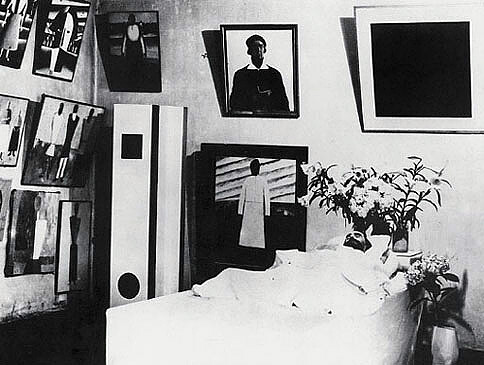

Thus we can say that avant-garde art produces transcendental images, in the Kantian sense of the term—images that manifest the conditions for the emergence and contemplation of any other image. Art of the avant-garde is the art not only of weak messianism, but also of weak universalism. It is not only an art that uses zero signs emptied out by the approaching messianic event, but is also the art that manifests itself through weak images—images with weak visibility, images that are necessarily, structurally overlooked when they function as components of strong images with a high level of visibility, such as images of classical art or mass culture.
The avant-garde denied originality, since it did not want to invent but to discover the transcendental, repetitive, weak image. But, of course, every such discovery of the unoriginal was understood as an original discovery. And, as in philosophy and science, to make transcendental art also means to make universalist, transcultural art, because crossing a temporal border is basically the same operation as crossing a cultural border. Every image made in the context of any imaginable culture is also a black square, because it will look like a black square if it is erased. And that means that—to a messianic gaze—it always already looks like a black square. This is what makes the avant-garde a true opening for a universalist, democratic art. But the avant-garde’s universalist power is a power of weakness, of self-erasure, because the avant-garde only became so universally successful by producing the weakest images possible.
However, the avant-garde is ambiguous in a way that transcendentalist philosophy is not. Philosophical contemplation and transcendental idealization are operations thought to be effectuated only by philosophers for philosophers. But the avant-garde’s transcendental images are shown in the same space of artistic representation as other—in philosophical terms—empirical images. Thus one can say that the avant-garde places the empirical and transcendental on the same level, allowing the empirical and transcendental to be compared in a unified, democratized, uninitiated gaze. Avant-garde art radically expands the space of democratic representation by including in it the transcendental, which was previously the object of religious or philosophical occupation and speculation. And that has positive, but also dangerous aspects.
From a historical perspective, the images of the avant-garde offer themselves to a spectator’s gaze not as transcendental images, but as specific empirical images manifesting their specific time and the specific psychology of their authors. Thus, the “historical” avant-garde simultaneously produced clarification and confusion: clarification, because it revealed repetitive image patterns behind the changes in historical styles and trends; but also confusion, because avant-garde art was exhibited alongside other art production in a way that allowed it to be (mis)understood as a specific historical style. One can say that the basic weakness of the avant-garde’s universalism has persisted until now. The avant-garde is perceived by today’s art history as a creator of art-historically strong images—and not of weak, transhistorical, universalist images. In this way, the universalist dimension of art that the avant-garde attempted to reveal remains overlooked, because the empirical character of its revelation has eclipsed it.
Even now, one can hear at exhibitions of avant-garde art: “Why should this painting,” let’s say by Malevich, “be here in the museum if my child can do it—and maybe even does?” On the one hand, this reaction to Malevich is, of course, correct. It shows that his works are still experienced by the wider public as weak images, notwithstanding their art-historical celebration. But, on the other hand, the conclusion that the majority of the exhibition visitors draw from this comparison is wrong: one thinks that this comparison discredits Malevich, whereas the comparison could instead be used as a means of admiring one’s child. Indeed, through his work, Malevich opened the door into the sphere of art for weak images—in fact, for all possible weak images. But this opening can be understood only if Malevich’s self-erasure is duly appreciated—if his images are seen as transcendental and not as empirical images. If the visitor to Malevich’s exhibition cannot appreciate the painting of his or her own child, then neither can this visitor truly appreciate the opening of a field of art that allows the paintings of this child to be appreciated.
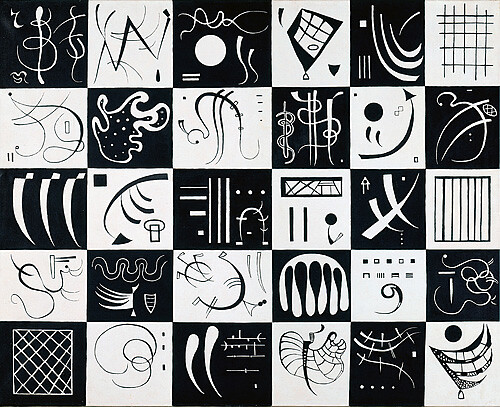

Avant-garde art today remains unpopular by default, even when exhibited in major museums. Paradoxically, it is generally seen as a non-democratic, elitist art not because it is perceived as a strong art, but because it is perceived as a weak art. Which is to say that the avant-garde is rejected—or, rather, overlooked—by wider, democratic audiences precisely for being a democratic art; the avant-garde is not popular because it is democratic. And if the avant-garde were popular, it would be non-democratic. Indeed, the avant-garde opens a way for an average person to understand himself or herself as an artist—to enter the field of art as a producer of weak, poor, only partially visible images. But an average person is by definition not popular—only stars, celebrities, and exceptional and famous personalities can be popular. Popular art is made for a population consisting of spectators. Avant-garde art is made for a population consisting of artists.
3. Repeating the Weak Gesture
Of course the question arises of what has happened historically to transcendentalist, universalist avant-garde art. In the 1920s, this art was used by the second wave of avant-garde movements as an allegedly stable foundation for building a new world. This late avant-garde’s secular fundamentalism was developed in the 1920s by Constructivism, Bauhaus, Vkhutemas, and so forth, even if Kandinsky, Malevich, Hugo Ball, and some other leading figures of the early avant-garde wave rejected this fundamentalism. But even if the early generation of the avant-garde did not believe in the possibility of building a concrete new world on the weak foundation of their universalist art, they still believed that they effectuated the most radical reduction, and produced works of the most radical weakness. But meanwhile we know that this was also an illusion. It was an illusion not because these images could be made weaker than they were, but because their weakness was forgotten by the culture. Accordingly, from a historical distance they seem to us to be either strong (for the art world) or irrelevant (for everyone else).
That means that the weak, transcendental artistic gesture could not be produced once and for all times. Rather, it must be repeated time and again to keep the distance between the transcendental and the empirical visible—and to resist the strong images of change, the ideology of progress, and promises of economic growth. It is not enough to reveal the repetitive patterns that transcend historical change. It is necessary to constantly repeat the revelation of these patterns—this repetition itself should be made repetitive, because every such repetition of the weak, transcendental gesture simultaneously produces clarification and confusion. Thus we need further clarification that again produces further confusion, and so forth. That is why the avant-garde cannot take place once and for all times, but must be permanently repeated to resist permanent historical change and chronic lack of time.
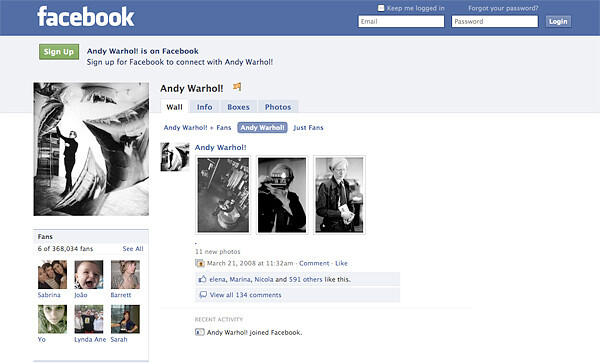

This repetitive and at the same time futile gesture opens a space that seems to me to be one of the most mysterious spaces of our contemporary democracy—social networks like Facebook, MySpace, YouTube, Second Life, and Twitter, which offer global populations the opportunity to post their photos, videos, and texts in a way that cannot be distinguished from any other conceptualist or post-conceptualist artwork. In a sense, then, this is a space that was initially opened by the radical, neo-avant-garde, conceptual art of the 1960–1970s. Without the artistic reductions effectuated by these artists, the emergence of the aesthetics of these social networks would be impossible, and they could not be opened to a mass democratic public to the same degree.
These networks are characterized by the mass production and placement of weak signs with low visibility—instead of the mass contemplation of strong signs with high visibility, as was the case during the twentieth century. What we are experiencing now is the dissolution of the mainstream mass culture as it was described by many influential theoreticians: as the era of kitsch (Greenberg), the culture industry (Adorno), or a society of spectacle (Debord). This mass culture was created by the ruling political and commercial elites for the masses—for the masses of consumers, of spectators. Now the unified space of mass culture is going through a process of fragmentation. We still have the stars—but they don’t shine as bright as before. Today everybody writes texts and posts images—but who has enough time to see and read them? Nobody, obviously—or only a small circle of likeminded co-authors, acquaintances, and relatives at the very most. The traditional relationship between producers and spectators as established by the mass culture of the twentieth century has been inverted. Whereas before, a chosen few produced images and texts for millions of readers and spectators, millions of producers now produce texts and images for a spectator who has little to no time to read or see them.
Earlier, during the classical period of mass culture, one was expected to compete for public attention. One was expected to invent an image or a text that would be so strong, so surprising, and so shocking that it could capture the attention of the masses, even if only for a short span of time, what Andy Warhol famously referred to as one’s fifteen minutes of fame.
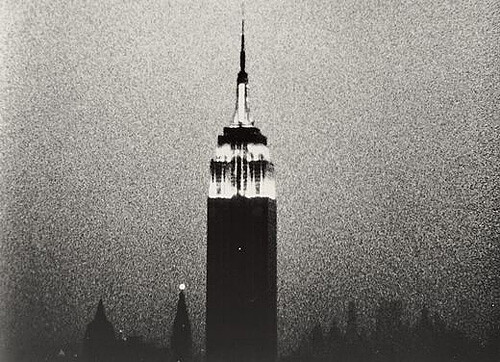

But, at the same time, Warhol produced films like Sleep or Empire State Building that were several hours long and so monotonous that nobody could expect spectators to remain attentive throughout their entire length. These films are also good examples of messianic, weak signs because they demonstrate the transient character of sleep and of architecture—that they seem to be endangered, put in the apocalyptic perspective, ready to disappear. At the same time, these films actually do not need dedicated attention, or any spectator at all in fact—just as the Empire State Building or a sleeping person do not need any spectator. It is no accident that both of these films by Warhol function at their best not in a movie theater but in a film installation, where as a rule they are shown in a loop. The exhibition visitor can look at them for a moment—or maybe not at all. The same can be said about the websites of the social networks—one can visit them or not. And if one does visit them then only this visit as such is registered—and not how much time one has spent looking at them. Contemporary art’s visibility is a weak, virtual visibility, the apocalyptic visibility of contracting time. One is already satisfied that a certain image can be seen or that a certain text can be read—the facticity of seeing and reading becomes irrelevant.
But of course the Internet can also become—and partially has become—a space for the strong images and texts that have begun to dominate it. That is why younger generations of artists are increasingly interested in weak visibility and weak public gestures. Everywhere we witness the emergence of artistic groups in which participants and spectators coincide. These groups make art for themselves—and maybe for the artists of other groups if they are ready to collaborate. This kind of participatory practice means that one can become a spectator only when one has already become an artist—otherwise one simply would not be able to gain access to the corresponding art practices.


Now let us return to the beginning of this text. The avant-garde tradition operates by reduction—producing in this way atemporal and universalist images and gestures. It is an art that possesses and represents the secular messianic knowledge that the world in which we live is a transitory world, subject to permanent change, and that the lifespan of any strong image is necessarily short. And it is also an art of low visibility that can be compared to the low visibility of everyday life. And it is, of course, not accidental, because it is primarily our everyday life that survives historical breaks and shifts, precisely because of its weakness and low visibility.
Today, in fact, everyday life begins to exhibit itself—to communicate itself as such—through design or through contemporary participatory networks of communication, and it becomes impossible to distinguish the presentation of the everyday from the everyday itself. The everyday becomes a work of art—there is no more bare life, or, rather, bare life exhibits itself as artifact. Artistic activity is now something that the artist shares with his or her public on the most common level of everyday experience. The artist now shares art with the public just as he or she once shared it with religion or politics. To be an artist has already ceased to be an exclusive fate, becoming instead an everyday practice—a weak practice, a weak gesture. But to establish and maintain this weak, everyday level of art, one must permanently repeat the artistic reduction—resisting strong images and escaping the status quo that functions as a permanent means of exchanging these strong images.
At the beginning of his Lectures on Aesthetics, Hegel asserted that in his time, art was already a thing of the past. Hegel believed that, in the time of modernity, art could no longer manifest anything true about the world as it is. But avant-garde art has shown that art still has something to say about the modern world: it can demonstrate its transitory character, its lack of time; and to transcend this lack of time through a weak, minimal gesture requires very little time—or even no time at all.
Jean Baudrillard, The Conspiracy of Art: Manifestos, Interviews, Essays, ed. Sylvère Lotringer, trans. Ames Hodges (New York: Semiotext(e)/MIT Press, 2005).
Giorgio Agamben, The Time That Remains: A Commentary on the Letter to the Romans, trans. Patricia Dailey (Stanford: Stanford University Press, 2005).
Ibid., 68.
Ibid., 10.
